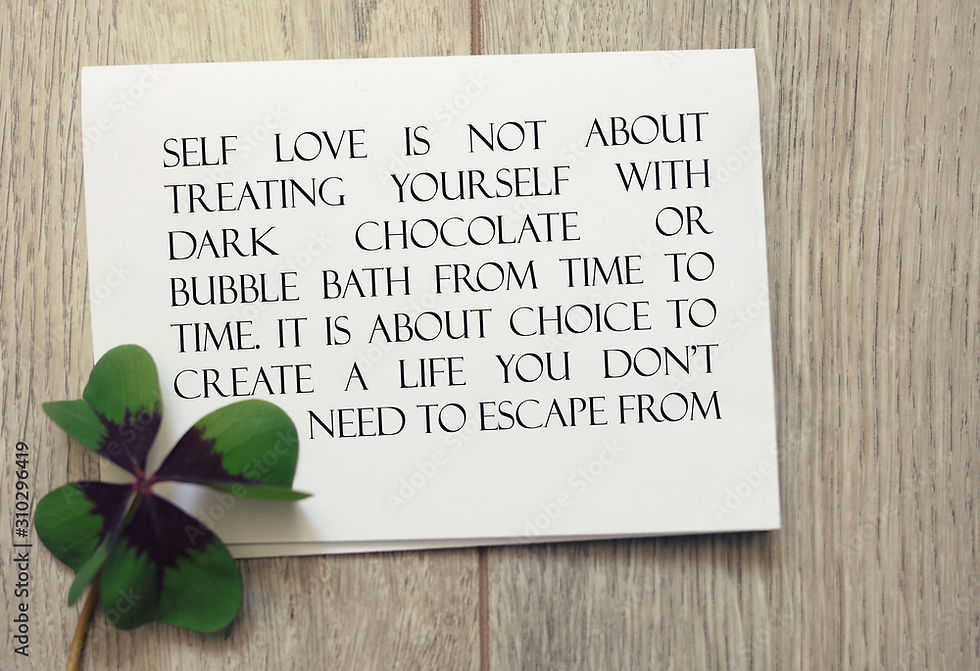
He put it perfectly when he said that this kind of acceptance means seeing someone as having unconditional worth—valuing them no matter what their mood, behavior, or latest questionable life choice might be. It’s about respecting them as a separate, whole person, allowing them to feel what they feel, even if those feelings are all over the place. This kind of acceptance creates a safe, warm space where someone can finally relax and just be themselves. And honestly, who wouldn’t want a relationship like that? It’s like being liked for being a weirdo on a rollercoaster of emotions, and still getting a high-five at the end.
Rogers believed this unconditional love and acceptance is like Miracle-Gro for the soul, essential for real growth.
Congruence: Getting Your Self Together
Now, let's talk about congruence—a fancy word for the magic that happens when your inside self and your outside self are in sync. Rogers said we all have two main aspects of our self-concept: the Real Self (who we are right now, unfiltered) and the Ideal Self (the superhero version of us that we aspire to be). Congruence is that sweet spot where these two selves align. It’s like when you’re trying to take a selfie, and the light hits just right so you actually look like how you imagine yourself—only it’s not just about looks, it’s about everything that makes you, well, you.
Rogers explained that when your real thoughts, feelings, and experiences match up with how you present yourself to the world, that’s when you’re truly living authentically. When you’re not trying to be someone you’re not, there’s a sense of peace and psychological well-being. But let’s be real—it’s not always that easy. Often, we have this nagging feeling that who we are doesn’t quite measure up to who we think we should be. And that mismatch? It’s the emotional equivalent of wearing shoes that are just a size too small—uncomfortable and eventually painful.
The Never-Ending Chase of the Ideal Self
Here’s where things get tricky. The Ideal Self can sometimes be like a treadmill set on an endless loop. You finally reach one goal, only to find that the finish line has moved a few steps ahead. Rogers himself said this pursuit is like an “endless demand,” and it’s easy to get caught in a cycle where you feel like you’re never good enough. Cue the feelings of anxiety, insecurity, and frustration as you try to bridge the gap between who you are and who you think you should be.
Therapists, according to Rogers, are like guides helping you navigate away from this exhausting treadmill. They help you peel back the layers of expectations—yours, society’s, your second cousin twice removed’s—until you find the real you underneath. And guess what? Meeting this real you can be a little scary. It’s like meeting a stranger who’s been living in your head all along, and realizing they’re not who you thought they’d be. But that’s okay, because it’s the start of getting off the treadmill and just being.
Empathy: Walking in Someone Else’s Shoes (and Not Just for the Free Foot Massage)
Empathy, in Rogers’ world, is like slipping into someone else’s shoes, but really getting where they’re coming from—not just pretending to listen while thinking about what’s for dinner. It’s about really understanding another person’s experience from their perspective. Rogers believed that this kind of deep, genuine listening was rare, but incredibly powerful. When a therapist truly “gets” what a client is going through, even the stuff just below the surface, it can be a game-changer.
Genuineness: The Real Deal
Finally, let’s talk about Genuineness—Rogers’ call for therapists to be real and authentic, no pretenses allowed. This isn’t just about sharing your thoughts and feelings honestly; it’s about being transparent in a way that builds trust. When a therapist is genuine, clients feel safer to explore their own thoughts and feelings because they sense that the therapist isn’t hiding anything either. It’s like having a conversation with someone who isn’t afraid to admit they, too, get lost on the way to the grocery store sometimes.
Becoming a Fully Functioning Person: The End Goal?
Rogers described a Fully Functioning Person as someone who’s open to new experiences, trusts their own feelings, and lives with a sense of freedom and responsibility. They’re not afraid to take on life’s challenges because they see them as opportunities to grow. They’re authentic, they’re self-aware, and they’re comfortable in their own skin—even if that skin is having a bad hair day.
Rogers emphasized that this “good life” isn’t about reaching a perfect state of bliss or fulfillment—it’s a process, a journey. It’s about moving in a direction that feels right for you, even if you haven’t quite figured out the destination yet. In short, it’s about embracing life as it comes, with all its ups, downs, and occasional detours.
The Actualizing Tendency: The Acorn Inside Us All
Rogers believed that deep down, we all have an innate drive to become the best versions of ourselves, like an acorn that’s just waiting to grow into a mighty oak. But, much like that acorn, we need the right conditions to thrive. With the right support—a little empathy, a dash of genuineness, and a lot of unconditional positive regard—we can stretch our roots, sprout new leaves, and grow into who we’re meant to be.
In the end, Rogers’ ideas remind us that while the journey to self-fulfillment might not be easy, it’s worth every step.
So let’s be kinder to ourselves, and to each other, as we navigate this wild and wonderful process of becoming who we are.
Liz Wilde



Comentarios